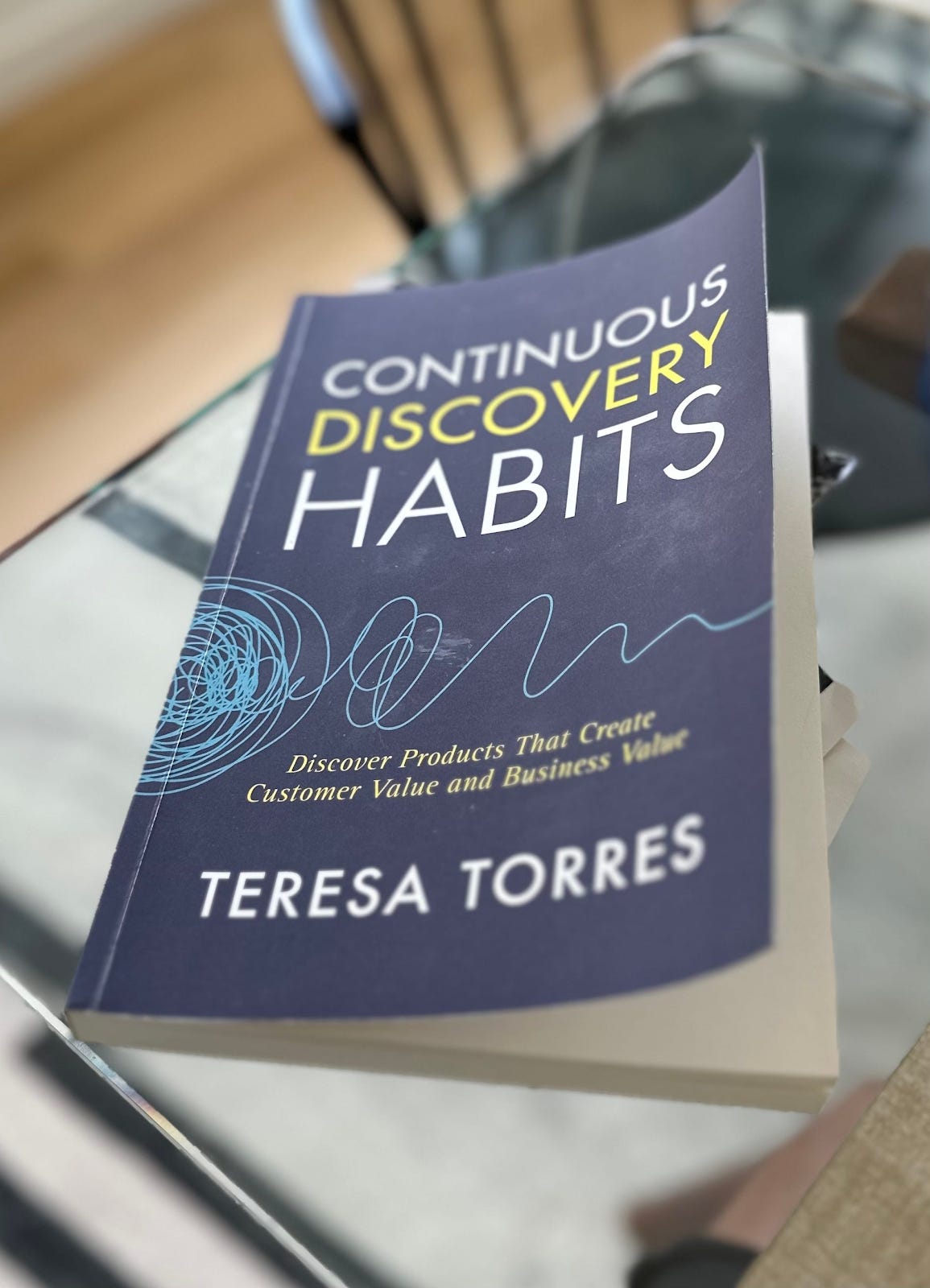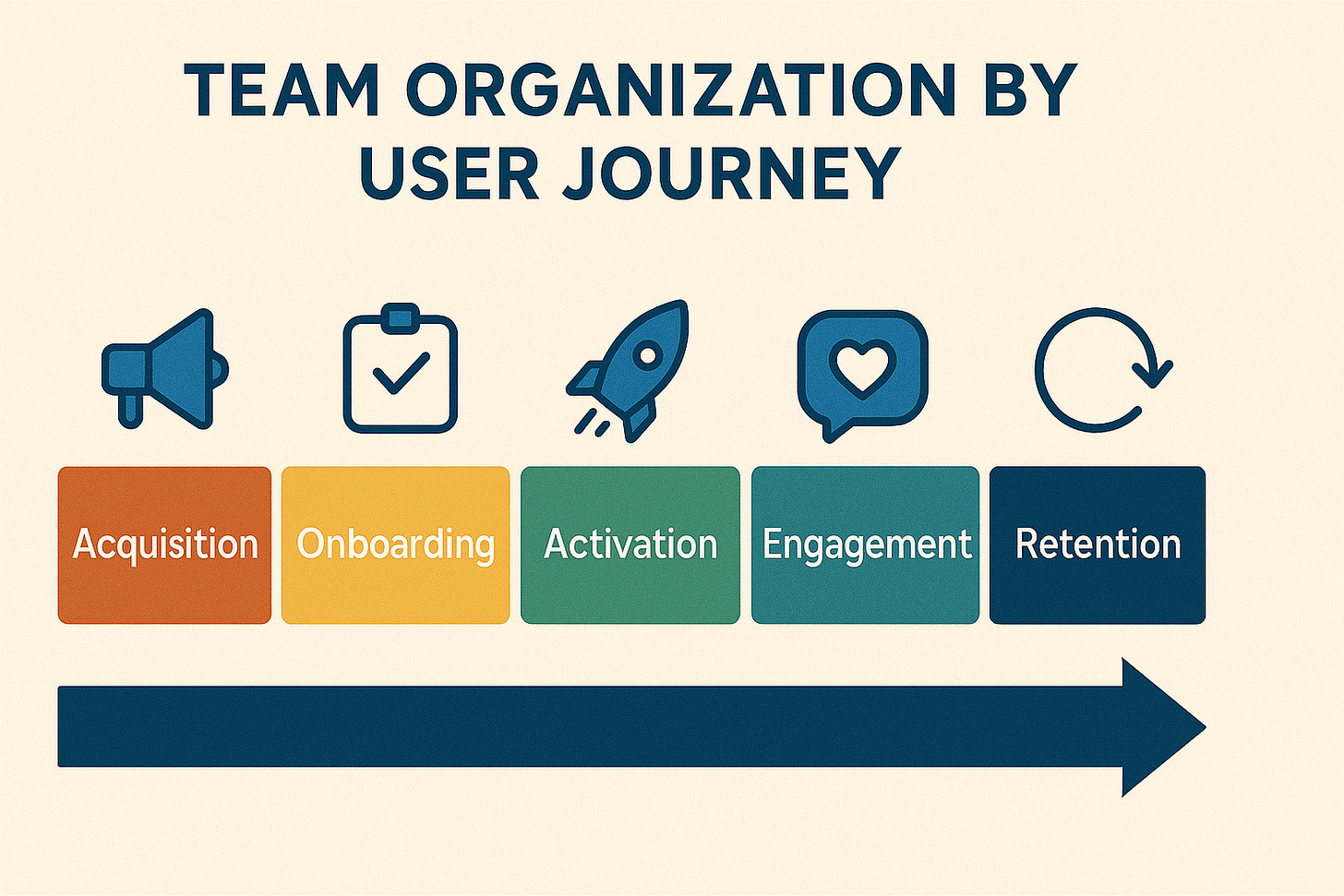Running on Product: Scaling a B2C2B Engine at Urban Sports Club
An interview with Amr Basha, Head of Product (Members & Corporate), Urban Sports Club
Berlin’s own Urban Sports Club has quietly grown into Europe’s go‑to membership for sweat, recovery, and now holistic wellbeing. Behind the scenes, Amr Basha steers the product vision that serves fitness fanatics and the partner gyms that welcome them. We sat down with Amr to unpack how he juggles a B2C2B platform, why he prefers being data‑informed over data‑driven, and what AI means for the future of movement. Think of this as your inside track to building products people rave about—and businesses can’t ignore.
1. Strategy & Vision
Before diving into product strategy, could you share a bit about yourself and your background, and how you found your way into product management at Urban Sports Club?
My name is Amr, I lead member and corporate product domains at Urban Sports Club (we call each domain Hive, like a tribe in Spotify model), I am an engineer by education but I loved connecting business with tech and leading a bigger vision than just engineering, so I started my first startup while being a student where I led a full team building cool products that solved local industries problems. Fast forward 14 years later I had a long-term mentorship with someone who I helped land a Sr. PM job at Urban Sports Club (USC), when they joined, they found a fresh opening for the first Head of Product for B2B at USC, and he referred me. And that emphasizes the power of the network. I am also a long-distance runner, you will always find me training for an upcoming race (usually a marathon or a half marathon) or a personal running goal. Running and fitness are a big part of my life.
As Head of Product, overseeing products that power Urban Sports Club’s business, what does a typical week look like for you? What key metrics do you track daily to ensure growth and success?
I have to care about member and corporate domains every week. Of course, some more things are happening on one or the other every week, so my focus will be mostly on one of them, based on critical projects or challenges. For metrics, I have my own dashboard that covers all key KPIs for the whole customer/user lifecycle, from acquisition metrics to different features’ KPIs, and churn or membership pause reasons. Of course, the main ones to focus on as the company keeps a keen eye on profitability are net new members and gross profit per member.
How do you prioritize features in a platform that serves both individual users and partner gyms?
Between members and partners, there are many features on both sides that impact the other side. Typically, a business case needs to be done for every initiative, but also taking into account the member or partner impact. And as there are two different tech organizations at USC that takes care of members and partners, collaboration and alignment are key to our collective success in a multi-sided platform.
Urban Sports Club operates with both individual consumers and businesses. How do you approach the B2C2B model, and what strategies have been most effective in driving business adoption?
One of the key things that USC was able to build over the years is a super strong member value proposition, which created tens of thousands of super loyal members who always speak highly of the service. That made USC have a cult-like loyalty, which made it easier for business adoption, as many of their employees are already super fans of USC. We have many examples of companies of all sizes that joined just because their employees asked for us explicitly. I would say then the most effective strategy is to focus on member experience and core value propositions, and facilitate virality and business and enterprise readiness.
What strategies do you use to adapt the product for different local markets while maintaining a cohesive global experience?
A platform mindset is your friend here. If you as a product person always think how can I serve this user segment (whether a user archetype or a specific market) while maintaining a cohesive platform, it will always be much better than building a bunch of custom rules for some or each market or user segment. Make good use of configurations, not customizations, and think ahead of similar problems or opportunities that could also be served to the rest of your user or customer base.
2. Data & Insights
You advocate for being ‘data-informed’ over ‘data-driven.’ How do you balance using data effectively without hoarding or misinterpreting it? Can you share a real-world example?
The term “data-driven” is being used as a standard without thinking much about what's behind it. If you are data driven by the meaning of the word, that means other qualitative insights (which are not data, nor statistically significant) will not be taken seriously, or even your product instinct and gut feeling, and the latter is also important. Product management is not a science or only logic, if that, then AI can replace us right now, but it’s more of an art and feeling connected to your users and the problems you are solving for them. So, I prefer using the term “data-informed” as the data is one (still key) input for your product decisions, but not the only one.
3. Product Development Process
How do you approach continuous improvement and iteration, especially in a product that hinges on user engagement, partner integrations, and physical locations?
Remember MVP? Yes, this means that every now and then, someone wants to change. I sometimes even encourage my PMs to do an MVP to the MVP. 😀 Meaning, challenging them and the team to deliver in the smallest value propositions incrementally that make sense. Many product teams fall into the trap of an “all or nothing” mindset, where features become feature suites that “have to” ship together, and in only a few cases, that is true, but the majority of products and features could be done incrementally. The best advice to read on the continuous improvement topic you can find in “Continuous Discovery Habits” by Teresa Torres.
4. Leadership & Team Management
When hiring for a product management role in a B2C2B environment like Urban Sports Club, what are the top qualities you prioritize in a candidate?
There’s no one list of qualities for all PM roles. Of course, there are generic things about all PMs that differ in maturity based on needed seniority, like handling complex stakeholder maps, or leading multiple product domains. But when it comes to hiring for different product roles, here are some of the criteria that I look for:
Product domain: there are some domains that require specific characteristics, for example acquisition domains require a person who gives a fiery energy, moves fast, experiments a lot, and has the spirit of chasing revenue goals.
Team fit: Sometimes, you have specific needs for the current team you are hiring for. You don’t want to bring someone who won’t fit with the rest, but at the same time, you might need someone to complement the team. For example, if the team is too disorganized, you should focus on bringing someone who likes to bring order to chaos.
Special situation needs: Some teams or company’s situations require different focus points when hiring, like when you have for example a need for someone to grow into the next leadership role soon, so you hire someone who is senior enough to be able to tackle that challenge in a year or so or when the time comes.
How do you structure the product team, and how do you ensure product managers have both autonomy and support?
There’s no silver bullet when it comes to organization design, organizations should evolve based on the average maturity of the teams, overall company size, and mid-to-long-term business needs and goals. I like to start thinking about structuring teams based on the customer lifecycle as a base of organizational design, because I believe this offers the best focus environment for the team. But sometimes it’s better to design the teams to maximize internal collaboration to help the org develop this muscle. Or do it based on main company metrics, like a growth org that is formed from all needed departments, including tech.
In each org design, the autonomy for the PMs will be different based on the roles and responsibilities map with other main stakeholders, but in general, I believe the PMs should be true owners of their “product” domain, meaning that they should be able to make product decisions on their own, while making sure their stakeholders and leadership are aligned as well as needed or impacted other teams and functions across the business. I will then make sure to get the roadblocks out of the way, give them constant guidance on strategy and vision, and help them make the right priority optimizations.
What is your approach to mentoring the next generation of product managers on your team?
Mentoring is all about personal growth. And it all starts with the PM themselves, they need to be self-aware of their strengths and growth areas to leverage or improve them. And this is always the first thing I do with any of my new PMs, try to understand their profile and make sure that both of us are aligned on those strengths and growth points. Then we work together on a long-term on-the-job plan to improve the growth areas and strengthen them even more, and leverage the strong areas. By doing this, the PM gets to see improvements, and at the same time, they feel they can tackle bigger things and have more and better visibility.
5. AI & Future Trends
How is AI shaping the future of fitness and wellness platforms, for example, through a ‘Fitness Coach AI Agent’?
You can already see the explosion of AI coaching apps out there for different types of sports; it’s already here, and it’s coming for more. Everything that has a coach or a trainer will have AI jumping into it. How the future will look and how the co-existence of a person and AI will shape over time. For aggregators like USC, they might become more of wellbeing assistants to everyone, where they offer a blend of on-site and digital offerings while helping people achieve their goals.
How does the shift from focusing on “sports” to a broader emphasis on “well-being” change your product direction?
Moving beyond sports or “fitness” is a natural evolution of the value proposition and the mission of all our segments. Our users’ wellbeing is not just based on their activities or sports they do, it goes beyond that to their nutrition, sleep, mental health, productivity, lifelong learning, etc. That means that traditional map-based on-site offering with search and normal check-in experiences will evolve into different experiences for different offer-unit consumption methods, discovery experiences, different personalization and gamification methods, and a whole new level of industry-wide API integrations and maybe even standards.
Are there any emerging fitness or consumer technology trends you’re most excited about, and how do they inform your roadmap?
Of course, AI is on the top of the list, and the inclusion of AI, both traditional ML and the use of LLM,s is finding its way in many areas of the experience, and many of current and future initiatives and planned features for the USC app are based on AI, stay tuned. ;) Also other novelties that enhance or even transform the user experience altogether are shaping up, like cultivating social interactions in the whole ecosystem is another,where users interact with each other and with their coaches and the partners they visit, which I am also personally excited about, because it helps grow the whole market. Another one is hardware, there’s a wave of massive innovation in connected and intelligent hardware at the moment in fitness and health tracking, and all in personal, private settings, not only professional. Examples like Withings, Technogym, and Peloton. I believe these new devices and services will create a new highly personalized health and fitness micro-ecosystem around the user, where aggregators like USC must find a way to seamlessly integrate, compensate, and amplify the benefits of such systems.
6. Challenges & Opportunities
What’s been one of your biggest product challenges at Urban Sports Club, and how did you overcome or learn from it?
One of the biggest challenges at USC is the business model itself. Offering an “unlimited access dream” while maintaining profitability is one of the biggest challenges I have worked on. Balancing usage and cost, while making the experience engaging, is tough. Some product decisions were made in the past that were intentional in making the user experience not optimal for that reason. But I saw it from a different lens, we had to appeal more to the ideal user profile for us. The user who will benefit the most from changing their lifestyle to be more active and take care of themselves. By reaching those more, also through our B2B strategy, we are in a much better position as a business, but most importantly, we actually live the company mission “helping everyone lead an active and healthy life”.
Have there been any surprising user behaviors or market shifts that forced you to pivot or rethink the roadmap?
In the B2B world, the word is that you have to have a strong Sales team to lead acquisition, which is also true for the well-being aggregator segment. But your sales team is expensive, and they will not handle tiny customers as the ROI of their time and effort is not great. So the best way is to also have a product-led acquisition funnel(s) to complement your sales teams and cross-feed insights to each other. USC was the first in the market that I know of that started product-led corporate acquisition. We thought it would be marginal gains, but to our surprise, it was a massive hit. The ease of use and fast time-to-value made it a very compelling acquisition funnel, but it also changed what we focus on in terms of the B2B/Corporate product domain. We have to focus on human-less onboarding and activation as well as customer engagement, which opens up a lot of opportunities.
7. Personal Take
Which lessons from earlier roles have most influenced your leadership style and approach to product?
You can do good politics and drive things forward, lead by bringing people together, it might look like a competition, but it’s not. Whoever plays the competition game (with his peers) loses the whole game.
Moving up too fast will burn you, literally and metaphorically. You will get burned out by the new demands if you work harder to prove yourself, and your image and perspective might get burned as you try to fill a space bigger than your current capabilities. Give yourself time and move up confidently.
The most important skill in people is being adaptive and willing to learn. You will be surprised at how few people out there have this and not just say it without feeling humble enough to learn or sometimes even see their growth areas.
What advice would you offer a product manager who aims to step into Product Leadership someday?
Moving into leadership is not easy. You have to let go of doing things yourself and let others do them, and empower them in doing so. That means you will have to accept “less optimal” outputs, but you will have to come up with ways to make sure the outcome is not impacted much. Growing your product team capabilities is more important than you think. For someone preparing to step into leadership, my main advice is “be patient”; be patient with yourself and your growth, be patient with the results, and learn to think long-term and act short-term. And be an observer, learn politics, influence, strategy, finance, marketing, CX, sales, AI, engineering, production readiness, and scalability by listening and observing what others do.
8. Rapid Fire Round
One book every PM should read? Escaping the Build Trap by Melissa Peri, one of the best mindset shift books I've read.
Favorite productivity hack? Set two to three goals per week. That’s it. Find time to get them done. The rest is extra.
A product you admire (and why)? Krisp.ai, I can’t have a meeting without this tool. It’s an AI-powered noise cancellation tool and note taker. I saw the team behind it make strategic product strategy mistakes and correct them, and they stayed dedicated to the core value proposition and added novel things on top as well. I highly recommend using it.
Thanks for reading! If Amr’s insights sparked new ideas, drop them into comments and tag us on LinkedIn—we love hearing what’s resonating. Hungry for more behind‑the‑scenes product wisdom?










